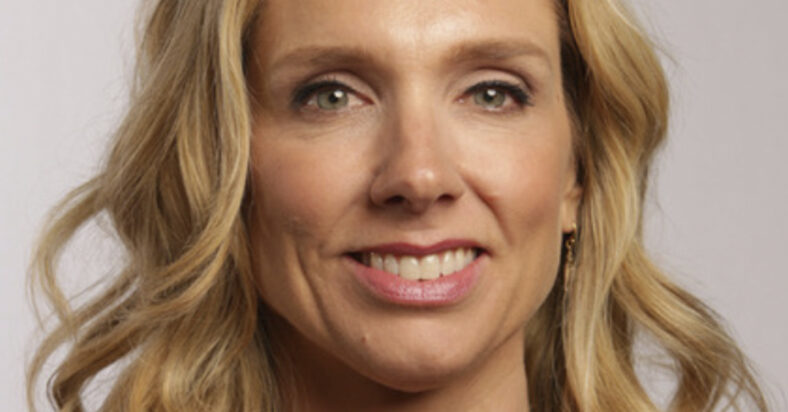10 Career Questions You’re Probably Asking—Answered By LinkedIn Career Expert Catherine Fisher

Are you feeling stressed or burnt out in your career?

According to a recent Workforce Confidence survey conducted by LinkedIn, 4 in 10 job seekers say they’d take a pay cut for a position that entails increased flexibility or decreased stress. Being able to move up the corporate ladder or finding a company with values that align with theirs are other reasons some job seekers would forgo a higher salary.
That statistic speaks volumes about how the attitudes surrounding our careers are rapidly shifting. I mean, think about it for a minute; would you be willing to cut your pay for less stress and burnout?
If you’re not among those who would accept a smaller paycheck for the mental health benefits, what can you do to help yourself feel less stressed or burnt out in your own career? Luckily, we were able to ask LinkedIn Career Expert Catherine Fisher 10 career questions you’re probably already thinking about.
We caught up with LinkedIn Career Expert Catherine Fisher to ask her 10 of our most burning career questions.

Catherine Fisher is the VP of Integrated Consumer Communications at LinkedIn, so she is the perfect person to weigh in on some of the hottest career topics right now.
She has a background in communications and coaching and is passionate about sharing pragmatic and relatable career advice (and she was incredibly generous with her time answering all of our questions).
Read on for Catherine’s tips on avoiding burnout, thriving at work, setting boundaries, and more!
Burnout is becoming more common, even among high performers. What are some of the top signs someone is edging toward burnout without realizing it?

Burnout looks a little bit different for everybody – it can be subtle, or it can be loud – and it’s usually a gradual process. Burnout has become even more common amidst a slew of work-related changes, including increasing demands to learn and start using AI at work.
Signs of burnout could look like dreading tasks you once enjoyed, feeling detached from your work, or feeling like you’re working more but accomplishing less. You may feel exhausted at work, emotionally and physically, and may even have difficulty concentrating or see a dip in your productivity.
For those feeling burnout, or heading that way, it’s important to pause and check in with yourself, to reset, to adjust your behaviors, and reinforce boundaries. This may mean thinking about a new job – our recent research finds that having a better work/life balance is one of the main reasons why one-third of U.S. workers want to leave their current job this year – or working with your current manager or employer to address the root causes of your burnout.
Since 4 in 10 job seekers say they’d take a pay cut for less stress or more flexibility, what does that say about how priorities are shifting in the workforce?

More money, more problems, right? We’re seeing that a high salary isn’t always enough of a trade-off, especially for those feeling burned out. Things like flexibility are no longer “nice to haves,” they’re now “musts” for workers looking to get a better work/life balance, and for some, they’re even more important than a big paycheck.
But it’s important to note that this desire for balance doesn’t signal a lack of ambition or that employees are “lazy,” it’s quite the opposite – it reflects a cultural shift in what success looks like. People are taking a more sustainable approach to work, one that doesn’t come at the expense of their mental or physical well-being.
What are some underrated but effective changes people can make to their daily routine to stay sane and focused?

Small changes can make a big difference in protecting your peace at work while staying on track. Shifting your self-talk to focus on growth – approaching projects from the POV of what you can learn and how you can grow your skills, rather than focusing on all the things you have to do, can help to re-inspire you.
It’s also important to celebrate your wins. Often, we forget to take a step back and congratulate ourselves on our achievements, like taking a moment to reflect on a win you had, even if it’s a small one, at the end of each day. These kudos for yourself can help you be more positive and motivated.
Another practice that’s perhaps a bit underrated is setting “mental bookends” for the day. This could look like going on a walk right after closing your laptop if you work from home every day, or doing a quick stretch or meditation in the morning before starting your work day. These little rituals can help create separation between work and life and signal to your brain when it is time to start and end the day.
What is “singletasking,” and how does it actually help with productivity and burnout?

Singletasking is the practice of completing one task at a time with focus and intention. It’s about deliberately avoiding the urge to multitask or rapidly switch between activities. Multitasking might feel productive – and we all do it sometimes – but science says otherwise.
With singletasking, you’ll not only get more done, but you’ll do it better with less stress. So protect your focus like it’s your most valuable asset (because it is), and you’ll likely find you’re making fewer mistakes, finishing work faster, and with better quality!
When you’re not splitting attention across tasks, you’re less likely to make errors and more likely to make better decisions. And while it might feel slower at first, singletasking reduces the time lost to task-switching and instead will help you get into a flow state where creativity, problem-solving, and execution are at their best.
“Calendar-blocking” and “JOMO” (Joy of Missing Out) have been trending—how do those ideas apply in a professional setting without making someone seem disengaged or less ambitious?

Calendar blocking and knowing when to say “no” at work (the best way to create JOMO) don’t signal disengagement; this shows clarity, discipline, and a long-game mindset. But you’ll need to be strategic – you can’t just start saying “no” to everything!
To embrace the “joy of missing out,” think about the projects and asks that don’t move you closer to your goals, and think through if you can pass off some, or all, of the project. If you can’t say no completely, suggest a smarter way to contribute that protects your time while still giving you an opportunity to shine.
When thinking about your calendar, you’ll want to block with purpose. Block time for focused work, transition time between meetings (yes, that’s allowed!), or personal needs like a mid-day walk or school pickup – your needs matter, even during the workday, and you should be able to carve out time for yourself without guilt.
A lot of people are quietly “career cushioning”—prepping for job changes behind the scenes. Any advice for managing that without burning out or spreading themselves too thin?

It’s true, a lot of people are career cushioning right now, and for good reason. With so much uncertainty in the economy, it’s natural to want a bit of insurance when it comes to your career. But the key to cushioning without burning out? Being intentional, and not trying to do everything all at once.
As hirers are leaning heavily on skills to find talent, you can start career cushioning by first taking stock of the skills you already have, and identifying one or two areas where you’d like to grow. Maybe there’s a LinkedIn Learning course on a new skill that’s been sitting in your “saved” list, or maybe you need to re-frame your work accomplishments – like juggling multiple clients, working cross-functionally or keeping your cool in high-stress moments – these are real, transferable skills hirers are looking for, and that you should be humble bragging about on your resume and LinkedIn profile.
Another key area of career cushioning is setting up your networking bench, thinking about and engaging with the people who can be in your corner when you’re ready to job hunt. Start nurturing those relationships. Engage in real conversations, comment on someone’s work, share an article, or just check in. These small moments build trust and visibility, without being transactional.
And finally, make a plan, but give yourself grace. Think about where you want to go, and what really matters to you in a future role. Is it more stability, better benefits, more flexibility or learning opportunities? Knowing your must haves will help you stay focused in a job hunt, and could even help you get more out of your current role.
Remember, career cushioning is about preparation, not panic. Just take it one step at a time.
What are some healthy ways workers can set boundaries while still being seen as a team player?

Communication is key! Make it obvious to your team when you’re working and when you’ll be offline by keeping your calendar current (block it according to your needs), offer to lead specific projects or tasks while taking a step back on others, and keep your co-workers and managers in the loop on your assignments so there are no surprises. This will all help you create boundaries without letting any balls drop.
For job seekers feeling ghosted or discouraged, what’s your best advice for staying emotionally steady while continuing the search?

First of all, if you’re disheartened in your job search, you’re not alone. Many are feeling that the job search has become harder over the last year, and 4 in 10 say they’ve been ghosted during their job search.
One of the best bits of advice I can give, which may seem a bit counterintuitive, is to pull back on the amount of applications you’re sending out. I know it can be tempting to apply as broadly as you can, or to apply for multiple roles within a company, but this can actually work against you (and creates a bottleneck of applicants for hirers to weed through). Instead, choose quality over quantity. You’ll improve your chances of standing out and hearing back by applying to jobs you’re a great skills and experience match for, which you can now see on any job on LinkedIn with the new job match tool.
And tap into your people!! Not only can your connections help you make inroads when looking for a job, but they can also give you real-time feedback into a job or company you’re interested in, or be a sounding board (or pretend interviewer!) throughout the process.
How can leaders or managers better support employees in avoiding burnout, especially in high-pressure environments?

First and most importantly, managers should model the behavior themselves as their actions set the tone for the work environment. If you’re sending emails at night or working on vacation, your team will think that is the expectation, even if it’s not.
Managers should also be creating space for regular check-ins to see how their team is really doing. You want employees who feel comfortable to come to you when they are feeling overwhelmed, and you can help them learn to push back on non-priority work.
Any final words of advice for someone who wants to protect their peace but is afraid of falling behind professionally?

Protecting your peace doesn’t mean you’ll fall behind at work. It’s actually how you stay in the game for the long run. Having a clear mind and being intentional about where you spend your energy is the key to safeguarding your mental health at work.
More About:Chicks We Love





